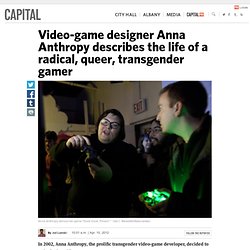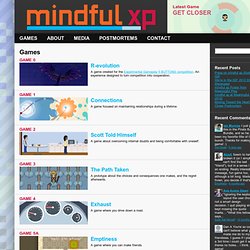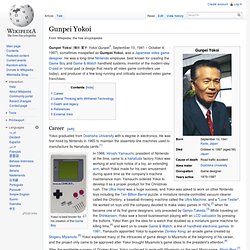

OutSlide. Erika Moen » Bio. Erika Moen is a freelance cartoonist born June 25, 1983 and graduated with an Illustrated Storytelling self-designed degree from Pitzer College in 2006.

She lives in Portland, Oregon where she has been a member of Periscope Studio since 2008. Having created comics for well over a decade, her work has been published by Dark Horse, Image, Villard and Scholastic, among many others. In addition to creating comics, she also regularly teaches classes and guest lectures on the subject in high schools and colleges around the country. She has been happily married to Matthew Nolan since October 2008. Yes! Patreon | Facebook | Twitter | Tumblr | Amazon | Flickr | Instagram (Photography credits: Lean Nash (Download full size image), Paige Jones, and P-Mod (Download full size image) Bibliography Select Client List Employment Self (2008-present), FashionBuddha Studio (2007-2008) and LAIKA (2006-2007) Select List of Gallery Shows and Appearances Gallery Shows Speaking / Teaching / Appearances. Video-game designer Anna Anthropy describes the life of a radical, queer, transgender gamer.
In 2002, Anna Anthropy, the prolific transgender video-game developer, decided to quit playing video games.

At the time, she was a sophomore at Purchase College, SUNY, in New York, buried in the coursework and psychic burdens that come with double majoring in women’s studies and creative writing, with a minor in lesbian and gay studies. But she was also fed up with the big-budget games of the day, like Super Mario Galaxy and Metal Gear Solid II, which she found to be “stupid,” “patronizing” and “just dumb.” Her period of Buddha-like renunciation ended a year later, when she discovered Game Maker, a software program that allows users to make computer games without prior computer programming experience.
She used it to create her first real game, a reflex-based puzzler called “Jaywalker: The Game of Pedestrian Revenge,” the goal of which is to cause car crashes by walking blindly into intersections. “Things could get a little sleazy, if you wanted them to,” Anthropy said with a grin. Games, artware, websites and noise by jake elliott. Mindful xp. Game 1 Connections A game focused on maintaining relationships during a lifetime.

Game 2 Scott Told Himself A game about overcoming internal doubts and being comfortable with oneself. Game 3 The Path Taken A prototype about the choices and consequences one makes, and the regret afterwards. Zang.org. Postcards from poetic and lyrical places in video games. Holden Link. RhetoricsEnd - Benjamin Nourse Miller’s portfolio. Adam Adamowicz. Gunpei Yokoi. Gunpei Yokoi (横井 軍平, Yokoi Gunpei?

, September 10, 1941 – October 4, 1997), sometimes misspelled as Gumpei Yokoi, was a Japanese video game designer. He was a long-time Nintendo employee, best known for creating the Game Boy and Game & Watch handheld systems, inventor of the modern-day D-pad or 'cross' pad (a design that nearly all video game controllers use today), and producer of a few long-running and critically acclaimed video game franchises. Career[edit] Yokoi graduated from Doshisha University with a degree in electronics. He was first hired by Nintendo in 1965 to maintain the assembly-line machines used to manufacture its Hanafuda cards.[1] Yokoi is best known for his creation of the Game Boy. After the worldwide success of Donkey Kong, Yokoi continued to work with Miyamoto on the next Mario game, Mario Bros.[7] He proposed the multiplayer concept and convinced his co-worker to give Mario some superhuman abilities, such as the ability to jump from higher places unharmed.[7]
Chrome Web Store. Profiles: Game Master. In 1972, an engineer and former carnival barker named Nolan Bushnell started a video-game company, in Santa Clara, California.

As an engineering student at the University of Utah in the nineteen-sixties, Bushnell had become obsessed with an early computer game called Spacewar. The game’s developers, a group of graduate students who were part of the Tech Model Railroad Club, at M.I.T., an early proving ground of computer hackers, had never considered selling the game; their idea was to demonstrate the appeal of interactivity, and to take a first small step toward simulating intelligent life on a computer. Bushnell’s ambition was more worldly. He wanted to manufacture coin-operated game-playing machines and license them to amusement arcades. He foresaw a new kind of midway hustle, in which the hustler would be inside the machine. In the late nineteen-eighties, a new type of video game quietly emerged—the God game. “O.K., now go to test mode,” Wright said. Dru Erridge.